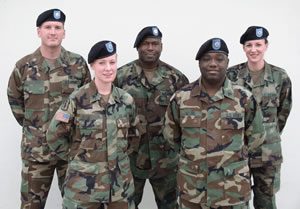Making Innovation a Discipline
 I discovered early in life that I was extremely curious, always wanting to discover new things. Being curious always brought with it something different, something new, a change. Most importantly, with change came the promise of opportunity for something better.
I discovered early in life that I was extremely curious, always wanting to discover new things. Being curious always brought with it something different, something new, a change. Most importantly, with change came the promise of opportunity for something better.
It was easy to connect embracing change to exploiting the change for some benefit. In other words, discovering how to use change to drive innovation from what I observed. From there, I became a student of innovation, learning as much as I could over the past 50 years, trying to make it a discipline. A discipline is learning a skill, making it a strength, which serves as a vehicle for creating value. Most people are skillful at least one thing. But why would anyone want to be disciplined in innovation?
If you ask most CEOs if they want, need and even demand, innovation, they’ll say, “Make it consistent and predictable so I can forecast how my firm will increase shareholder value.â€
It may seem obvious that a CEO wants innovation to be a discipline, but what about being a discipline in everyday life? Should the average person want to become a better innovator? Absolutely. Being an innovator is synonymous with being a problem solver, and solving problems leads to a higher quality of life.
Innovation drives competitiveness in a person, community, business or country and is widely considered an important capability. It is also very difficult to argue that innovation is a bad thing when a simple Google search of the term yields more than 420 million citations in less than 1 second – most of them positive.
But What Is Innovation?
Innovation is like the weather: It is widely discussed, but poorly understood while being critically important. How does one approach the topic of becoming more innovative? Perhaps an old adage is useful: “How does one eat an elephant?†The obvious answer is: “one bite at a timeâ€.
What I’m suggesting is that innovation can be broken down into simple elements, providing a roadmap people can follow on their journey to becoming innovators and more effective problem solvers. If you accept this, then everyone should aspire to becoming more innovative: But how?
Becoming an innovator is like learning to ride a bicycle: At first, it’s daunting. Then it’s easy and fun. Finally, it’s mastered and never forgotten. In effect, bike riding becomes a discipline. Treated in the same way, innovation can not only mastered but constantly improved. The real question is: How does one teach, learn and master innovative behavior so it becomes a discipline?
My hypothesis is simple:
- Everyone is capable of, and desires to be, innovative
- Innovative behaviors can, and must be, taught, learned and mastered over a lifetime
- Once mastered, innovative behaviors become a discipline never forgotten
- Innovators and problem solvers are synonymous
- Innovators solve more problems leading to a more fulfilling life
- Innovation is fun to teach and do
Innovation, in its simplest definition, is a human response to change, creating something valuable in the present. It is important to realize that all human beings are born with the ability to innovate because our DNA demands that we adapt to change to survive. Simply put, we are a successful species because we are innovative. So what happened? Why is being innovative so difficult and even rare? The simple answer is that life got easy. We don’t need to solve life preserving problems today to survive, and we are educated not to be innovative. Curiosity and inquiry are the roots of all innovation, and most educational systems give credit for answers and not questions. Worse yet, a curious, potentially innovative student, is often punished or stifled.
Dealing with Change
Being innovative demands that people recognize the changes around them, be curious enough to investigate what the change means and create options for responding to this change as a way of creating value.
The first steps toward becoming more innovative are:
- Recognize and analyze the changes around you
- Allow your natural curiosity to characterize the change
- Develop a hypothesis for responding to the change
- Put your hypothesis into action
- Assess the results
- Create a new hypothesis
- Repeat the process until you have a way to create value however you define it
This process should be familiar because it is the scientific method. While simple in form, it is difficult to master. All innovations have common features applying to all circumstances, while concurrently being situational or impacted by the context in which innovation occurs. The situational element of innovation is one reason why innovative methods that work for one company do not work for another. Especially challenging is the fact that innovative people are not innovators by themselves. The lone innovator is the exception, not the rule. This fact alone raises many questions about how collaboration helps people in becoming more innovative.
In summary:
Innovative behaviors can be mastered becoming a discipline and something anyone can do given our species has survived by adapting to changes around us. However, many people have lost their ability, or willingness, to adapt to change since it’s become easy not to do so and in the process the average person has become less innovative. The good news is anyone can recover their innate innovative skills by applying “The Scientific Method” in their everyday lives by observing the change around them and responding to the opportunities created by change to their personal advantage.
Wait! Before you go.
Choose how you want the latest innovation content delivered to you:
- Daily — RSS Feed — Email — Twitter — Facebook — Linkedin Today
- Weekly — Email Newsletter — Free Magazine — Linkedin Group
 Stephen A. Di Biase, Ph.D. is the founder and president of Premier Insights LLC, an innovation practices consultancy based in Chicago, Ill., United States, and previously served as the Vice President – Research, Development and Engineering with the Lubrizol Corporation, Senior Vice President and Chief Scientific Officer at JohnsonDiversey Inc. and the Chief Scientific Officer of Elevance Renewable Sciences.
Stephen A. Di Biase, Ph.D. is the founder and president of Premier Insights LLC, an innovation practices consultancy based in Chicago, Ill., United States, and previously served as the Vice President – Research, Development and Engineering with the Lubrizol Corporation, Senior Vice President and Chief Scientific Officer at JohnsonDiversey Inc. and the Chief Scientific Officer of Elevance Renewable Sciences.
NEVER MISS ANOTHER NEWSLETTER!
LATEST BLOGS
How Brexit Has Affected UK E-commerce Businesses
Photo by Zyro on Unsplash The popularity of online shopping was already growing at an impressive rate – and…
Read MoreOvercoming range anxiety: three tips for EV owners
Photo by Jenny Ueberberg on Unsplash In the last few years, electric vehicles (EVs) have become more and more…
Read More


